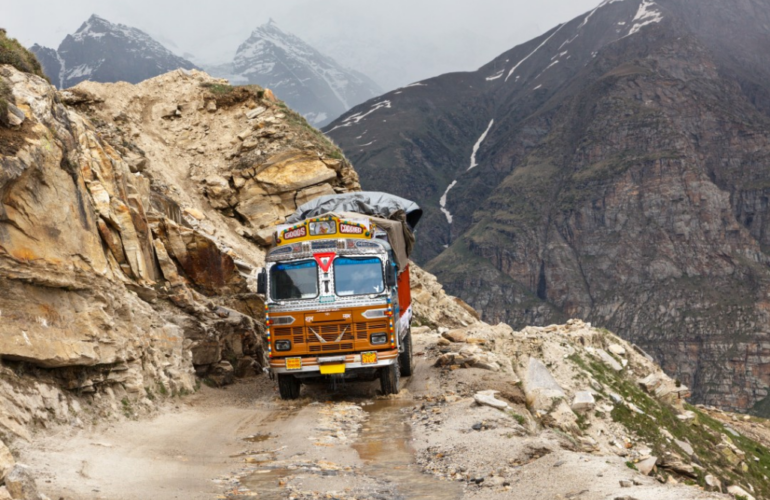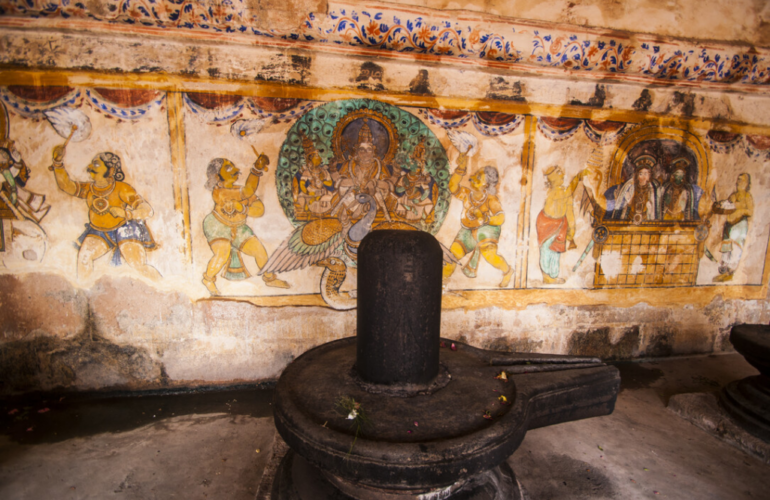The Green Diamond – Hidden Secrets of Moringa
Moringa oleifera is a flora that is often called the drumstick tree that has been consumed for centuries because of its therapeutic properties and medicinal benefits. It likewise has antifungal, antiviral, anti-inflammatory, and antidepressant properties.
The tree is native to India, especially South Indian states yet additionally grows in Asia, Africa, and South America. Moringa contains an arrangement of proteins, supplements, and minerals.
Tamil Nadu is set to create Rs 50,000 crore in revenue in five years, with Theni, Madurai, Dindigul, Thoothukudi, Ariyalur, Tiruppur, and Karur being pronounced as ‘Moringa Export Zones’.
Among the different farming products cultivated in Tamil Nadu, moringa (drumstick) and its value-added ingredients have gigantic export potential in different nations because of its lofty nutritional benefits.
Tamil Nadu represents 24% of world moringa manufacture, broadly produced in Theni, Dindigul, and Tiruppur areas and the state is home to six out of the 13 famous moringa varieties on the planet. The native variety of moringa grown in Tamil Nadu – Periyakulam 1 (PKM 1) is the most sought-after moringa type across the world, because of its adaptability to any climatic circumstances and high nutrient significance. The moringa variety was created by the Tamil Nadu Agriculture University almost twenty years before. While all parts of a moringa tree are edible and have specific trade markets, moringa leaves and their nutritional products are more popular.
Tamil Nadu accounts for 24% of world Moringa production.
Tamil Nadu is set to create Rs 50,000 crore in revenue in five years.
Why Moringa is special?
Moringa contains numerous energizing mixtures, for example:
- Vitamin A
- Vitamin B1 (thiamine)
- Folate and ascorbic acid (vitamin C)
- B2 (riboflavin)
- B3 (niacin), B-6
- Zinc
- Calcium
- Potassium
- Iron
- Phosphorus
- Magnesium
Moreover, it is incredibly low in fat and contains no noxious cholesterol.
What are the advantages?
Moringa is accepted to have many advantages and its purposes range from wellbeing and beauty to forestalling and fixing sicknesses. The advantages of moringa include:
1. Safeguarding and supporting skin and hair
Moringa seed oil is advantageous for safeguarding hair against damage and keeps it spotless and sound. Moringa also contains protein, and that suggests it is valuable in shielding skin cells from getting hurt. Moreover, it contains hydrating and detoxifying elements, which help the skin and hair. It may even prevent skin contaminations and bruises.
2. Treating Edema
Edema is a difficult condition where swelling in the body develops due to fluid trapped in the body’s tissues. The curing properties of moringa may be strong in holding Edema back from forming.
3. Safeguarding the liver
Moringa seems to safeguard the liver against harm brought about by hostile to tubercular medications and can enliven its maintenance cycle.
4. Forestalling and treating diseases
Moringa extricates certain properties that could assist with forestalling malignant growth. Similarly, it contains niazimicin, which is a compound that suppresses the improvement of disease cells.
5. Treating stomach grumblings
Moringa concentrates could assist in tolerating issues, like constipation, gastritis, and ulcerative colitis. The anti-microbial and antibacterial properties of moringa may assist with inhibiting the development of different microorganisms, and its high vitamin B content assists with absorption.
6. Battling against bacterial sicknesses
As a result of its antibacterial, antifungal, and antimicrobial properties, moringa concentrates could fight sicknesses caused by Salmonella, Rhizopus, and E. coli.
7. Making bones better
Moringa additionally contains calcium and phosphorous, which assists with keeping bones sound and solid. Alongside its mitigating properties, moringa concentrate could assist with treating conditions like joint pain and may also mend harmed bones.
8. Treating temperament problems
Moringa is believed to be useful in treating wretchedness, nervousness, and weariness.
9. Safeguarding the cardiovascular framework
The strong cell antioxidants found in Moringa concentrate could assist with forestalling cardiovascular harm and have additionally been displayed to keep a solid heart.
10. Assisting wounds with mending
The Concentration of moringa has been displayed to assist wounds with shutting as well as decrease the presence of scars.
11. Treating diabetes
Moringa assists with lessening how much glucose is in the blood, as well as sugar and protein in the urine. This enhanced the hemoglobin levels and overall protein content in those tried.
12. Treating asthma
Moringa might assist with lessening the seriousness of some asthma assaults and safeguard against bronchial tightening influences. It has furthermore been proven to help with better lung capacity and breathing generally.
13. Safeguarding against kidney issues
Individuals might be more averse to developing stones in the kidneys, bladder, or uterus in the event that they ingest moringa separately. Moringa contains elevated degrees of cell antioxidants that could help reduce harmful levels in the kidneys.
14. Lessening hypertension
Moringa contains isothiocyanate and niaziminin, compounds that assist to prevent arteries from bulging, which can cause circulatory strain to rise.
15. Further developing eye wellbeing
Moringa contains vision further developing properties on account of its high cell antioxidant levels. Moringa might stop the enlargement of retinal vessels, forestall the thickening of slender layers, and restrain retinal brokenness.
16. Treating pallor and sickle cell illness
Moringa could assist an individual’s body with engrossing more iron, subsequently expanding their red platelet count. It is thought that the plant extricate is exceptionally useful in treating and forestalling pallor and sickle cell infection.
Moringa Products Market Analysis:
The worldwide Moringa products market was estimated at 5015.6 million USD in 2020 and will grow with a CAGR of 5.35% from 2020 to 2027, as per the report. The global Moringa market rose at a CAGR of around 5% from 2015-2020. Hence, reliable resources anticipate that the market should display healthy growth in the upcoming years.
Moringa fixings are acquired from a variety of shrubs and trees whose parts like nuts, pods, seeds, roots, barks, leaves, and flowers are appropriate for human consumption. Among these, leaves contain bioactive mixtures, which are utilized in fresh, dried, or powdered structures in various food recipes. Besides, blossoms are viewed as aphrodisiacs and valuable for treating hysteria, muscle ache, splenomegaly, and cancer, while pods are utilized as vegetables. As moringa components have pain-relieving, hypo-tensive and glycaemic, and anti-inflammatory, microbial, bacterial, and oxidant capabilities, they track down the broad application in the development of prescriptions for diabetes, hypertension, and human immunodeficiency infection (HIV).
The thriving awareness about the medical advantages related to moringa ingredients is expanding its utilization in the food and beverage (F&B) industry worldwide for preparing tea, curries, sauces, and salad dressing. Their interest is additionally upheld by their value in upgrading the nutritious substance of various creature feeds and harvests. Other than this, as moringa seed oil is sweet and impervious to rancidity, it tracks down applications in the assembling of aromas, paints, ointments and biodiesel, and filtration of drinking water. Moringa ingredients are additionally used to deliver fiber for ropes and mats and mash for papers. Besides, a few logical examinations support that moringa trees develop quicker and better in parched regions and assume a noticeable part in desertification. This is bringing about their rising usage for supporting worldwide food security and limiting hunger. Besides, the rising reception of moringa fixings in lessening bodyweight, diminishing adiposity, further developing glucose resistance, and easing back a few disease cells is expected to drive the market.
Key Market Segmentation:
Our Group gives an examination of the critical patterns in each sub-fragment of the worldwide moringa ingredients market, alongside estimates at the worldwide, local, and national levels from 2021 to 2026. Our report has classified the market in view of the source, application, and distribution pipeline.
Separation by Source:
- Leaves
- Seed
- Oil
- Others
Separation by Application:
- Food and Beverages
- Beauty care products and Personal Care
- Pharmaceuticals
- Others
Separation by Distribution Channel:
- General stores
- Online Stores
- Specialty Stores
- Others
Separation by Region:
- North America
- USA
- Canada
- Asia-Pacific
- China
- Japan
- India
- South Korea
- Australia
- Indonesia
- Others
- Europe
- Germany
- France
- United Kingdom
- Italy
- Spain
- Russia
- Others
- Latin America
- Brazil
- Mexico
- Others
- The Middle East and Africa
- Saudi Arabia
- UAE
- Egypt
- Nigeria
- South Africa
Moringa and its value-added ingredients have a tremendous market in North America, Europe, Gulf Countries, and China. There is a developing business sector for moringa-based animal food in Australia because of its therapeutic properties.
The worldwide Moringa Products market was estimated at 5015.6 Million USD in 2020.
Moringa market value is expected to increase with a CAGR of 5.35% from 2020 to 2027.
Major segments in the moringa business to be specific are moringa powder, moringa tea, moringa chocolates, cakes, juices, lattes, nutraceuticals (moringa pills, tablets), and animal food. While moringa latte, tea, and moringa tablets have immense demand in North America for their weight reduction properties, plans made utilizing moringa oil and seeds are exceptionally famous among Chinese men as an aphrodisiac.
The highly competitive nature of the industry has also been analyzed alongside the profiles of the vital participants Ancient Greenfields Pvt Ltd., Earth Expo Company, Green Era Foods & Nutraceutics, Grenera Nutrients Pvt. Ltd., Herbs & Crops Overseas, Saipro Biotech Private Limited, Himalaya Drug Company (Himalaya Global Holdings Ltd.), Kuli Kuli Inc., Organic India Pvt. Ltd. (Fabindia Overseas Private Limited), and Santan International.
About the Author
Arun Rajiah is a serial entrepreneur, a start-up guy, with multiple industry experiences and building business from scratch. With over 18+ years of experience in IT, Retail, Finance, and Venture Capital, Arun is currently leading a group of companies ventured into 4 countries and grooming next-generation leaders in his organization, and focusing on helping at least 10k start-ups in his career.
Source: ICT Connect




















